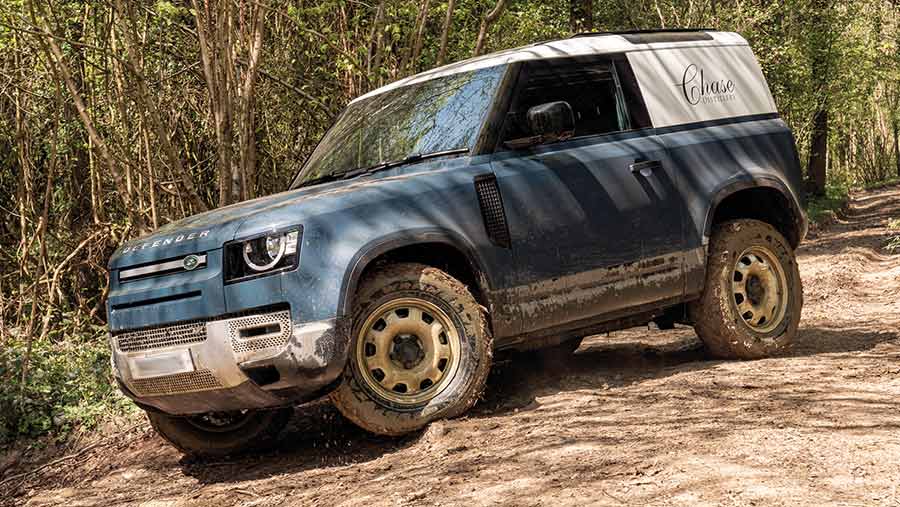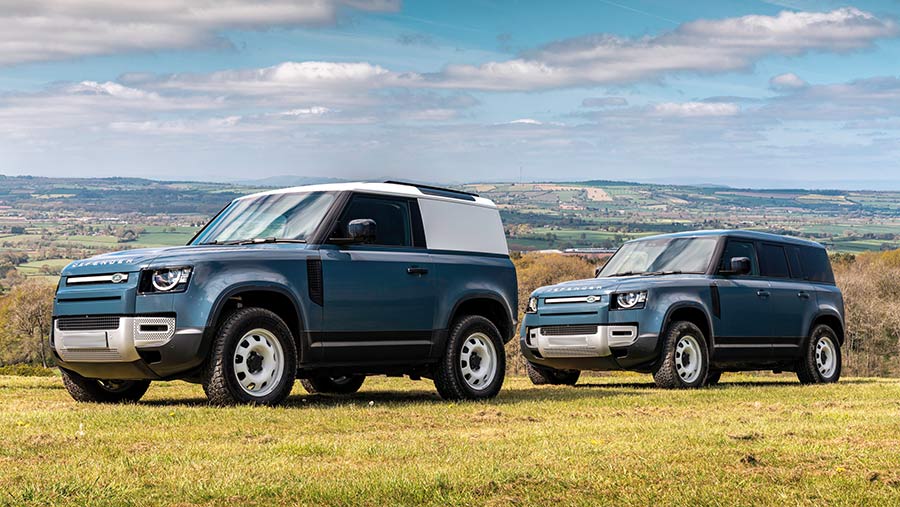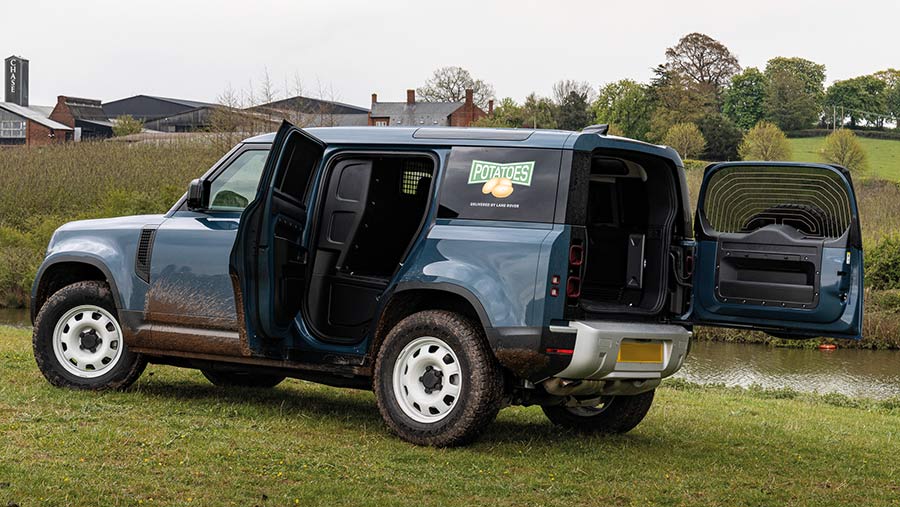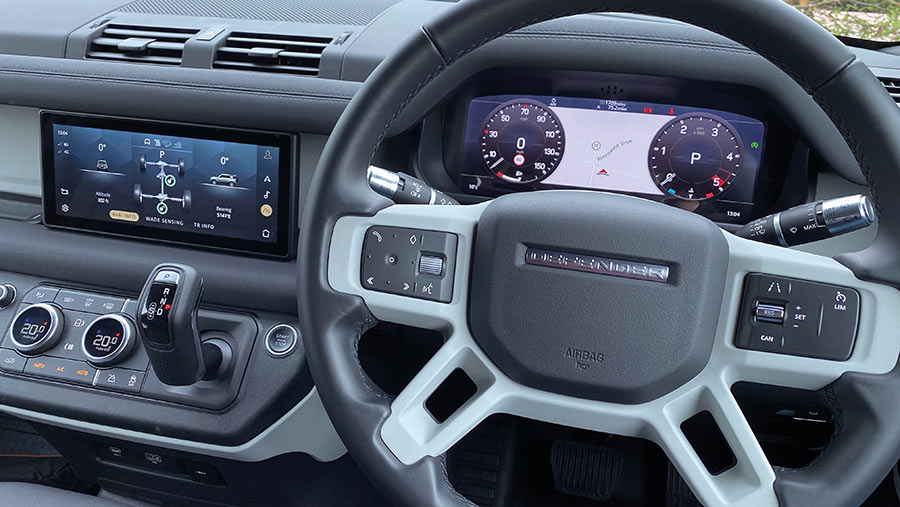First drive: Land Rover’s commercial-spec Defender Hard Top
 Defender 90 © Land Rover
Defender 90 © Land Rover After a near five-year hiatus, Land Rover has returned to a somewhat thinner commercial 4×4 sector, as the load-lugging derivatives of its latest Defender prepare to do battle with the Toyota Land Cruiser and top-spec Hilux, Ranger and D-Max pickups.
As mentioned recently in Farmers Weekly, there has been an exodus from the pickup market, and that has given Land Rover renewed, and somewhat unexpected, enthusiasm for the farming sector with its SUV-cum-van.
And it’s unlikely to encounter much two-seat, four-wheel-drive commercial vehicle competition either. Mitsubishi’s Shogun Sport will soon be gone, leaving the simple, reliable but ageing Land Cruiser as the Defender Hard Top’s sole rival.
That said, more ferocious competition is pending as the countryside awaits Ineos’ introduction of its debut Grenadier. It is expected later this year.
Land Rover Defender 90 Hard Top spec
- Engine 3-litre, six-cylinder
- Max power 200hp
- Max torque 500Nm
- Transmission Eight-speed auto
- Fuel consumption 32.5mpg
- Top speed 109mph
- 0-60mph 9.2s
- Unladen weight 2,285kg
- Towing 3,500kg
- Starting price 90 – £35,820 (on the road, ex VAT); 110 – £43,012
See also: On test: Land Rover’s new Defender 110 D240
Commercial appetite
Large fleet orders have been the driving force behind one in four new Discoverys going out in two-seat commercial spec.
Land Rover expects that figure to be replicated with the Defender Hard Tops – both the three-door, short-wheelbase 90 model and five-door 110, which have been developed with the firm’s Special Vehicle Operations Division.
They’re priced at the apex of the pickup market, with the 90 at £35,820 ex VAT and the bigger 110 ranging from £43,012 to well over £60,000 depending on the spec.
Though they are too plush for the rough end of farm life, they do have several strong suits. Full-time four-wheel drive through a central differential, an optional locking rear diff and 3.5t towing capacity are key assets.
In fact, the Defender is rated to tow 3.7t in the US, which stands it in good stead for towing a trailer full of tups up a Welsh hill.

Defender 90 and 110 models © Land Rover
Similarly, the aluminium monocoque is stronger than the old body-on-frame design, and coil-sprung suspension (air cushions are an option on the 110) delivers a better ride than most pickups.
For the record, Land Rover says it has no plans for an open-back, pickup-style Defender.
Carrying capacity
Unlike the five-seat passenger version, panel-sided Hard Top Defenders have a fixed bulkhead and full-height partition behind the front seats to separate drivers from their cargo.
Two seats are standard, but buyers can spec a third central “jump seat”. It’s a handy extra and can be folded down to form an armrest, though it does hog space when not in use.
Opting for it automatically ticks the box for the quirky, and generally useful, addition of a camera feed on the rear-view mirror.
Footwells are lined with hose-down rubber mats, as is the base of the boot space, which is accessed through a side-hinged rear door.
The 90 derivative is rated for a payload of up to 670kg and has a total load space of 1,355 litres. By comparison, the 110 can carry up to 800kg in a 2,059-litre load space, which is enough to swallow a Euro pallet.

The five-door 110 is rated to carry 800kg and tow 3,500kg © Land Rover
Useful fitments include hooks, stowage nets and lashing points, as well as lockable underfloor storage.
Both models have a 58-litre compartment at the rear, but the 110 also has a further 155 litres in what would be the footwells of a passenger model.
Land Rover is working with an increasing number of companies that offer load bed modifications, and there are a stack of aftermarket options, including drawers, racks, shelves and dog kennels.

Off-road settings can be viewed through the central screen © Land Rover
Engine and transmission
The 90 is only available with Land Rover’s D200 six-cylinder engine tuned to develop 200hp and 500Nm.
Buyers of the 110 get the choice of two inline sixes – the D250 (249hp/570Nm) and D300 (300hp/650Nm).
Both offer smooth torque delivery through an eight-speed automatic transmission with a twin-speed transfer box. The rest of the spec is the same as that of the passenger vehicles.
Ground clearance is 291mm, wading depth is 900mm and Land Rover’s Terrain Response 2 system should help drivers get out of sticky situations.
As for spec, the 90 is limited to fabric seats and rubber flooring. The 110 opens up a world of options with three specs – S, SE and HSE – governing interior, exterior and wheel finishes.

Defender dashboard © Land Rover
Land Rover Discovery commercial
Land Rover also launched a new version of its Discovery Commercial late last year.
It comes with the firm’s D300 diesel – a 3-litre, six-cylinder engine that will deliver 300hp and 650Nm of torque. Estimated fuel consumption is about 31.9mpg and 0-60mph is a punchy 6.5secs.
Cargo space amounts to 2,024 litres – just shy of the Defender 110 – and it has a 784kg payload and 3.5t towing capacity.

Discovery commercial model © Land Rover

